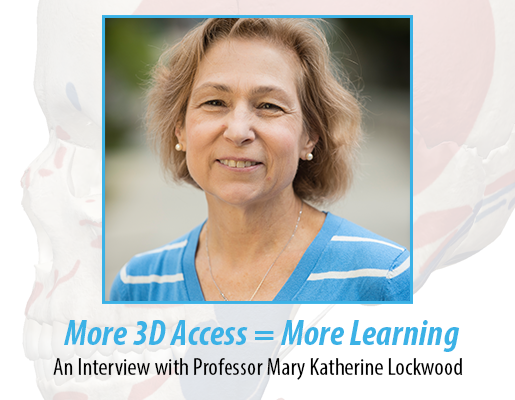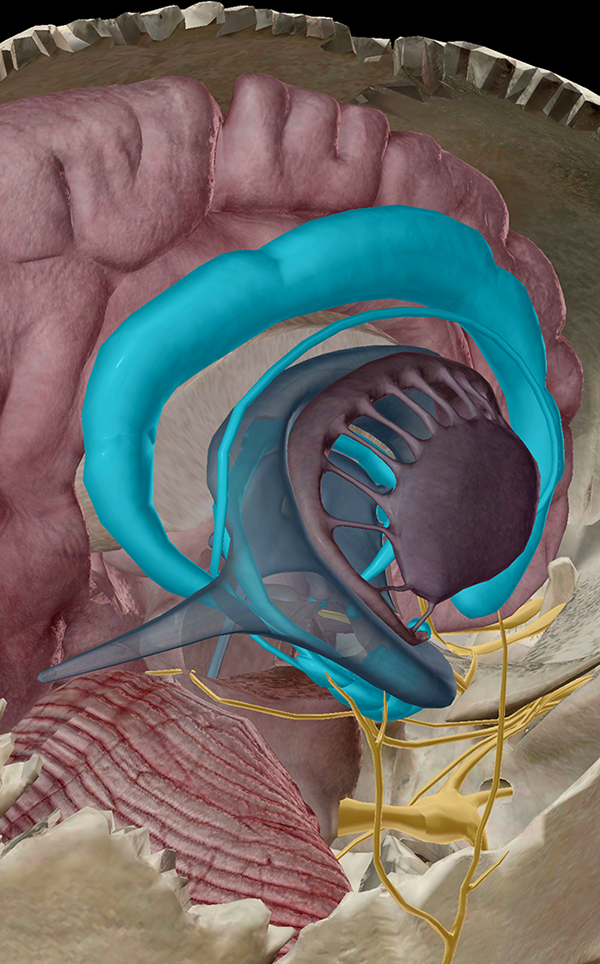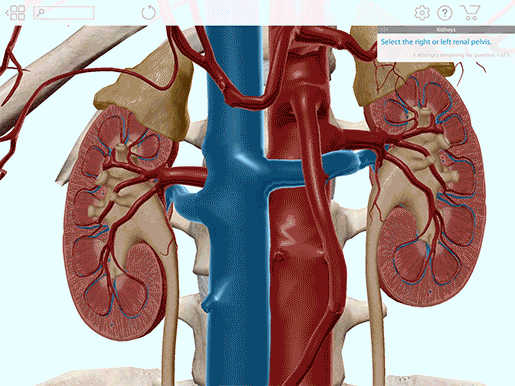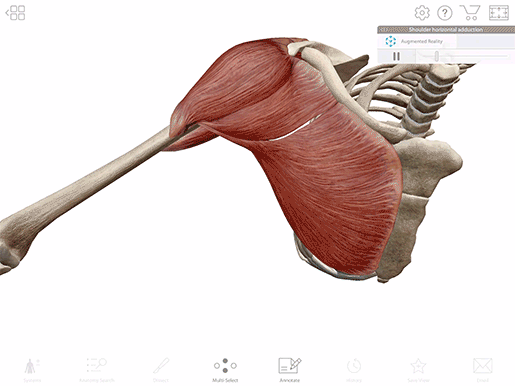More 3D Access = More Learning: An interview with Professor Mary Katherine Lockwood
Posted on 5/29/18 by Lori Levans

Lab time at the University of New Hampshire is two hours a week for undergrad A&P. That, says Professor Mary Katherine Lockwood, is not enough time to truly study and learn anatomy.
“I use Visible Body in lab with their other materials,” Lockwood says of her freshman students—roughly 500 students in her live classes and another 60 online. “Mostly I use it because students are in lab about two hours a week. It's not enough time to look at the anatomical material.”
Lockwood uses Visible Body’s Course Pack, which integrates Visible Body’s top apps into a learning management system—in this case, Canvas. She can assign visual learning modules, practice quizzes, and off the shelf quizzes from the graded quiz bank.
She also uses the Course Pack as homework by assigning content before lab time to get students ready for that week’s lab activity, and then also for when they are done with labs to assess what they’ve learned.
More Access = More Learning
“Visible Body is a great student tool. My TAs give them a practical exam, and if the students have just two hours to look at the heart and don’t have the opportunity to go over it again, they won’t learn it,” she says.
Rotating the anatomical models and removing layers and structures gives students a more in-depth way to learn. “It’s not the same in a book. With [Human Anatomy] Atlas, they can take apart the layers and get a sense of the anatomy,” she says. “And when they go to take their practical, the knowledge is not in their head, flat—it’s in 3D.”

Close up of the limbic system, in context, in Human Anatomy Atlas.
Anatomy lab is every other week, “so they won’t be back for two weeks,” Lockwood says. “When they go to take their practical it might be 5-6 weeks since they saw the model. It would be different if you had a situation where you could go back into the lab and review. With 600 students, that isn’t happening.”
Having the flexibility to use Visible Body apps on phones is a big win for Lockwood. “They use the apps on their phone. [The] nice thing about having it on their phone [is that] they have the model and they can go back to study it; they can look at their phone and say, ‘oh yeah, I remember that.’“
Lockwood says the students use Human Anatomy Atlas more in the lab due to its easy exploration of anatomy for all body systems. Anatomy & Physiology, a guided tour of anatomy and physiology for all systems, helps them reinforce their learning.
Quizzing Made Easy—for Everyone
Quizzes are used to reinforce concepts taught in lecture. “I’ve covered it, so they double check the material and make sure they know it. The multiple choice quizzes on physiology concepts replicate what they do on an exam.”
Having a large number of students makes the Course Pack’s off-the-shelf quizzing convenient and easy.
“It’s easier for me to use the off-the-shelf quizzes,” she says. “[Especially] for an entry level, freshman-level class, where you’re really looking for a way to deliver material to students that’s time efficient. If you have as many students as I do, which is over 500… I cannot tell you how many hours I spend just answering emails from them. I need something that works well and that helps deliver and reinforce content, without a lot of hand-holding on my part.”

A dissection quiz in Human Anatomy Atlas, prompting the quiz-taker to select the renal pelvis.
Lockwood says she likes that “the quizzes are packaged so that you don’t have to customize them. They are sorted by Bloom’s level, so I don’t have to try to figure out what will work for them. Someone did all the work for me.” She says she feels confident in the quality of the quiz bank because “it’s gone through testing, it’s gone through the weeding out [of more v. less impactful material]. That makes it so I know it’s going to work reasonably well for them.”
The quality of the questions and the ease of use of the platform instill great confidence. “The reason I know this works well,” she says, “is that students don’t come back to me and tell me it didn’t work. If the questions are bad, I hear from them. My eagle-eyed students will catch errors. Visible Body has gone through [their own content] enough. I put my own stuff together, so I can miss errors. It’s nice to have something that’s professionally done. It’s been done properly, it’s been checked by people who… this is what they do.”
Light Bulb Moments
What content makes a light bulb go off over students’ heads? Muscle origin and insertion points.
“When they come in the lab, we ask them to learn 50 muscles. It’s a lot,” Lockwood admits. “Most of them don’t know the names of muscles. They know the biceps are in your arm, but not where they start and end. It’s nice for them to have the model and take off the layers to get a sense of superficial and deep muscles—where they start and end, and where they fit in with the bones. It's hard to get that in 1-2 lab visits. A flat picture is not helpful when learning the muscles.”

Horizontal adduction of the shoulder, featured in Human Anatomy Atlas.
The bottom line: The Visible Body Course Pack “works well to deliver content, reinforce ideas, and have students quiz themselves to determine what they know and don’t know.”
“Some other programs have so much material, so for the kids who have a short attention span, they feel like they’re in a long slog,” Lockwood says. “[Course Pack quizzes] are short enough and they get the sense that they can sit down and finish it. They get a grade. There’s the gratification that they finished it. They see they got the concepts. They can move on after that.”
Compared to some of the other platforms, she says, Course Packs are affordable—and it’s a big win that the mobile versions of the apps are for students to keep forever.
“I like that the apps don’t expire. I have people who take my class and get a C or a D, then they want to get into a program and take A&P again senior year to get a better grade. Now they know [what they want to do], they’re focused; if they want to get into nursing, they need at least a B in A&P. Other products are a year or 2-year subscription and they have to buy it again to use it for just a few months,” Lockwood says. “It’s kind of nice to know that you can use Visible Body as a study tool, or even better if the apps are used in another class, forever. They know they own it.”
Want more Visible Body?
- Learn more about how and why students use 3D anatomy apps in their studies.
- Read our interview with Lab Coordinator Debbi Johnson, who explains how 3D apps improve student comprehension in anatomy lab.
- Check out Visible Body's anatomy apps and find out how to bring 3D anatomy to your classroom or lab!
- Never miss a thing! Sign up to get our awesome emails and be the first to know about free anatomy content, new blog posts and eBooks, secret sales, and more!



